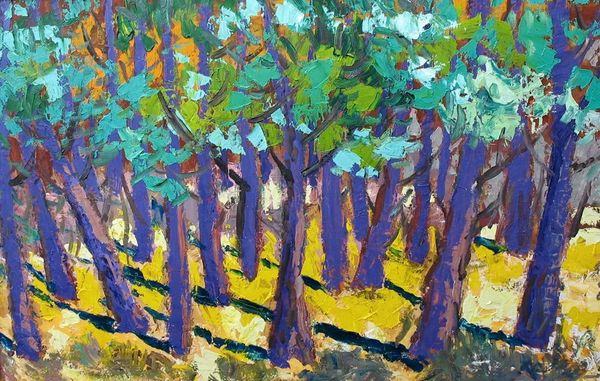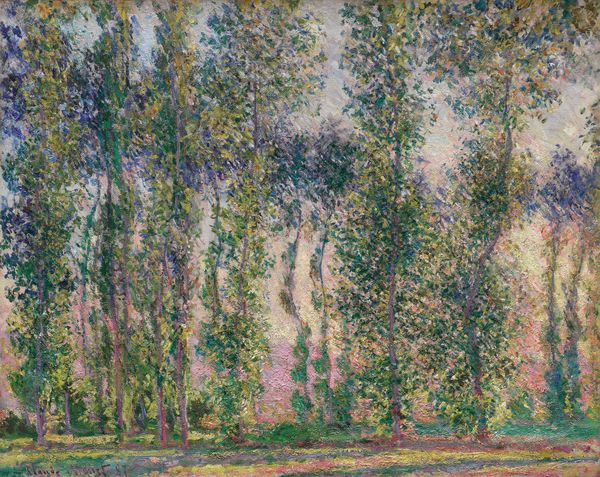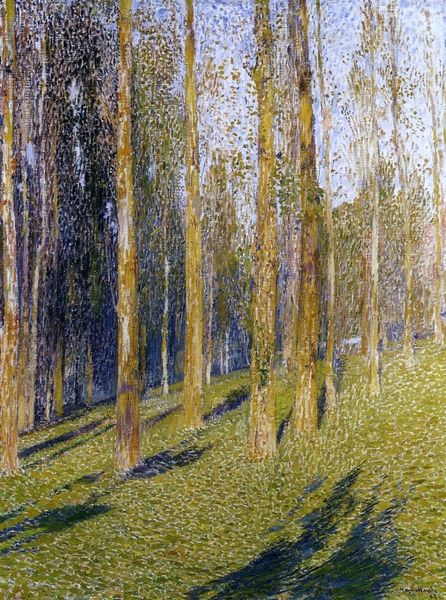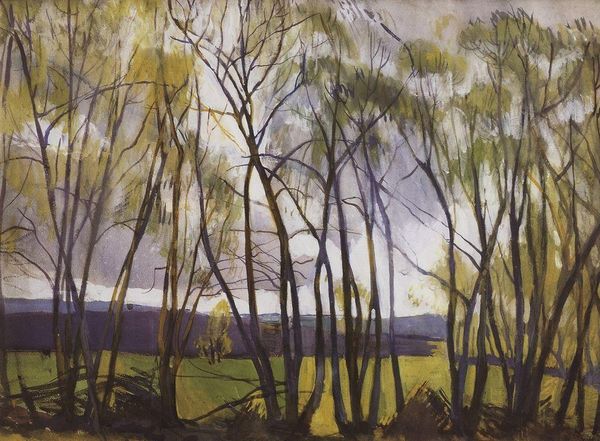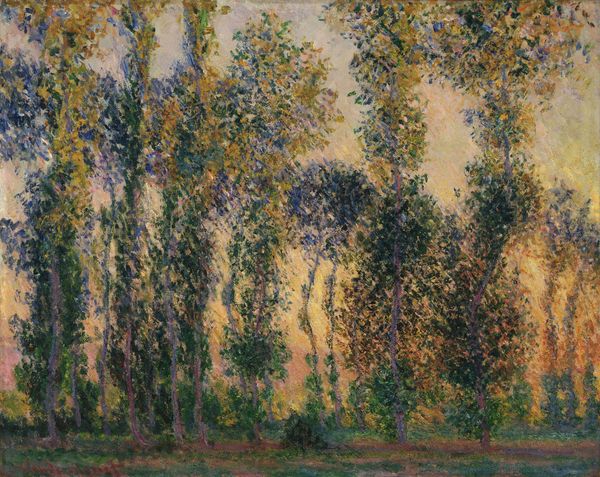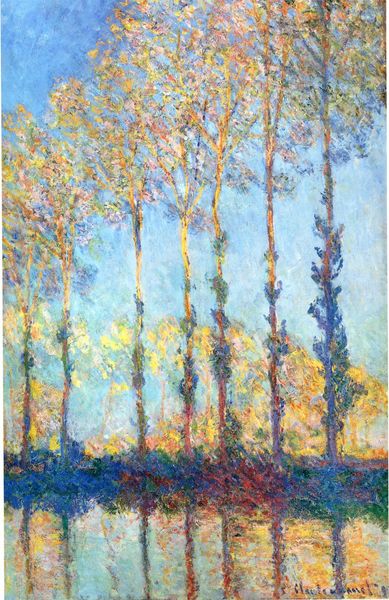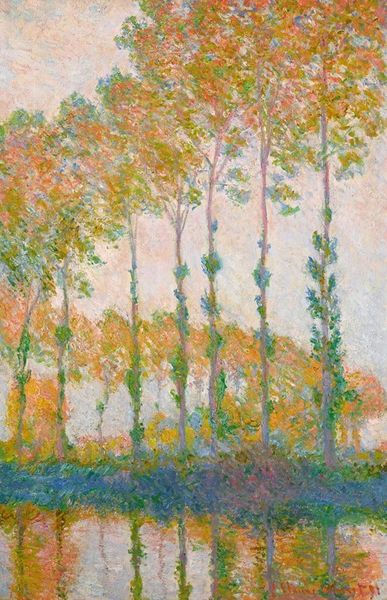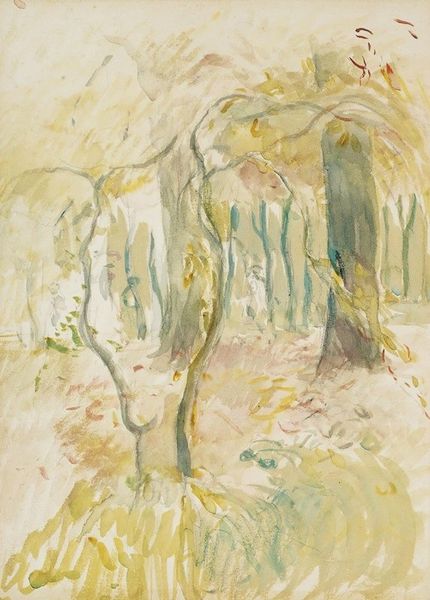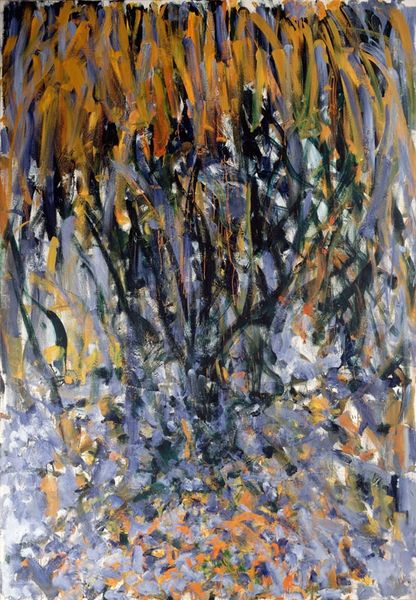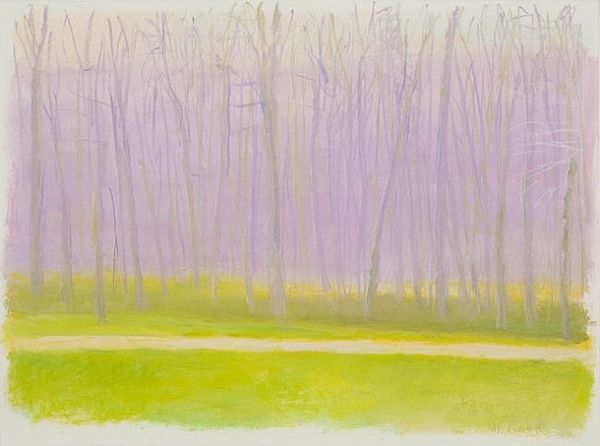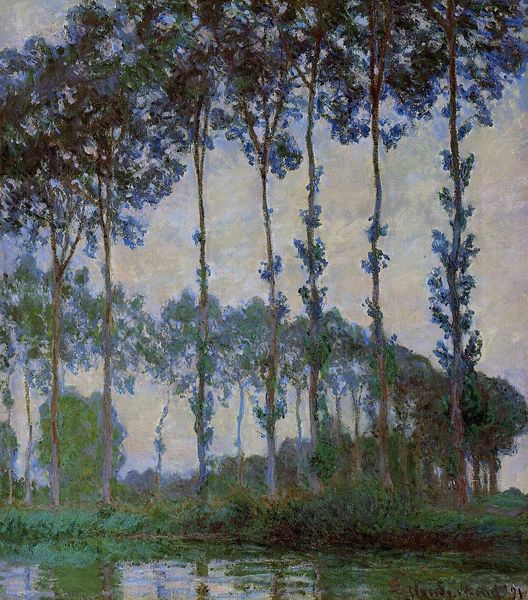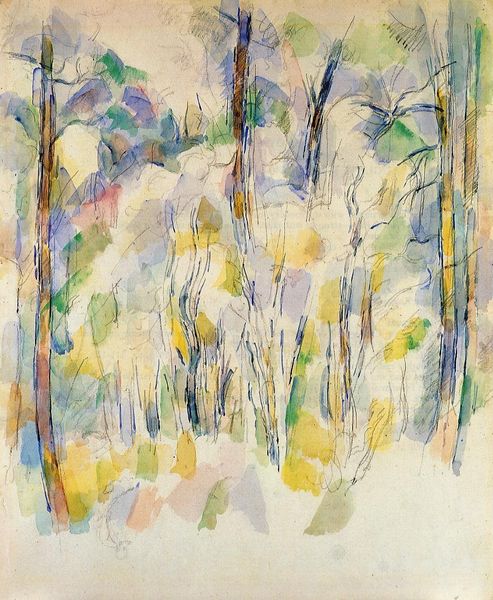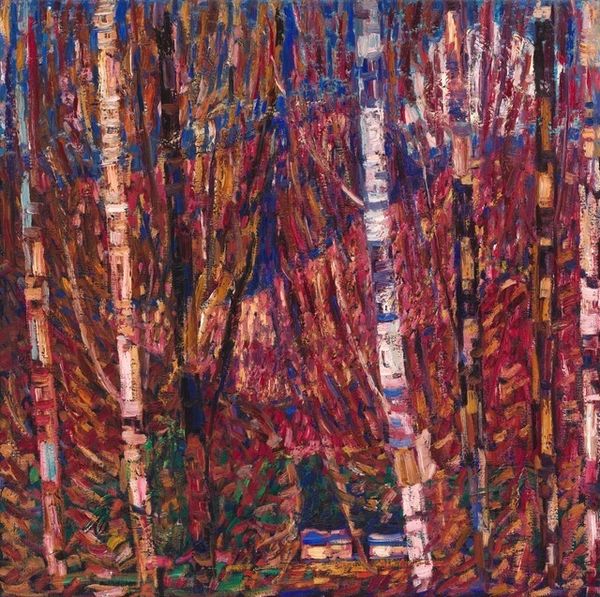
Copyright: Public domain
Curator: Here we have Gustave Loiseau’s "Poplars by the Eure River," painted in 1900. The work beautifully captures a tranquil scene en plein air. Editor: Ah, yes. At first glance, it feels like a whispered secret, doesn't it? A landscape shrouded in the palest lavender and gray, like a memory fading at the edges. There’s a quiet melancholy to it. Curator: Indeed. Loiseau was part of a second generation of Impressionists. His paintings often emphasize the repetitive rhythms found in nature, and his artistic trajectory really solidified within the context of late 19th-century French landscape painting. Editor: Repetitive rhythms… that's it! The trees are like notes in a delicate, muted song, echoing each other across the canvas. And that hazy light, it softens everything, almost obscuring the forms, inviting us to really look, to feel. Curator: His approach does push beyond simply recording optical impressions. Consider the choice of subject, the specific stand of poplars along the Eure; these were also popular spots for earlier artists, and by engaging that artistic lineage, he’s contributing to a broader dialogue about the French landscape. Editor: He is also really having fun with textures. Up close, you can almost feel the strokes, the way the paint builds up the foliage. It's impressionistic, yes, but also tactile, engaging. Makes you want to touch those ghostly trees. I find the lack of human presence also strikes a contemplative mood, a pure untouched view of nature. Curator: A key facet of Impressionism’s later developments was precisely this emphasis on subjective experience within a landscape increasingly impacted by industrial modernity. The selection and portrayal of natural settings offered viewers an alternate, idealized space. Editor: Idealized… maybe. Or maybe just honest? He's capturing a specific feeling, a moment of quiet contemplation amidst the chaos. It’s a fleeting thing, but the painting freezes it, makes it eternal. For me this image vibrates with memories… not specific ones, more like echoes of a collective past… fields that I have visited… landscapes from old black and white pictures from family albums… Curator: Precisely. And what that also brings to mind is thinking about how subsequent viewers would engage and interact with such an image, even decades later. Editor: An apt perspective, indeed. I think Loiseau achieved something profound here – a portal to quietude. Curator: A fine observation upon which to conclude. Thank you.
Comments
No comments
Be the first to comment and join the conversation on the ultimate creative platform.

